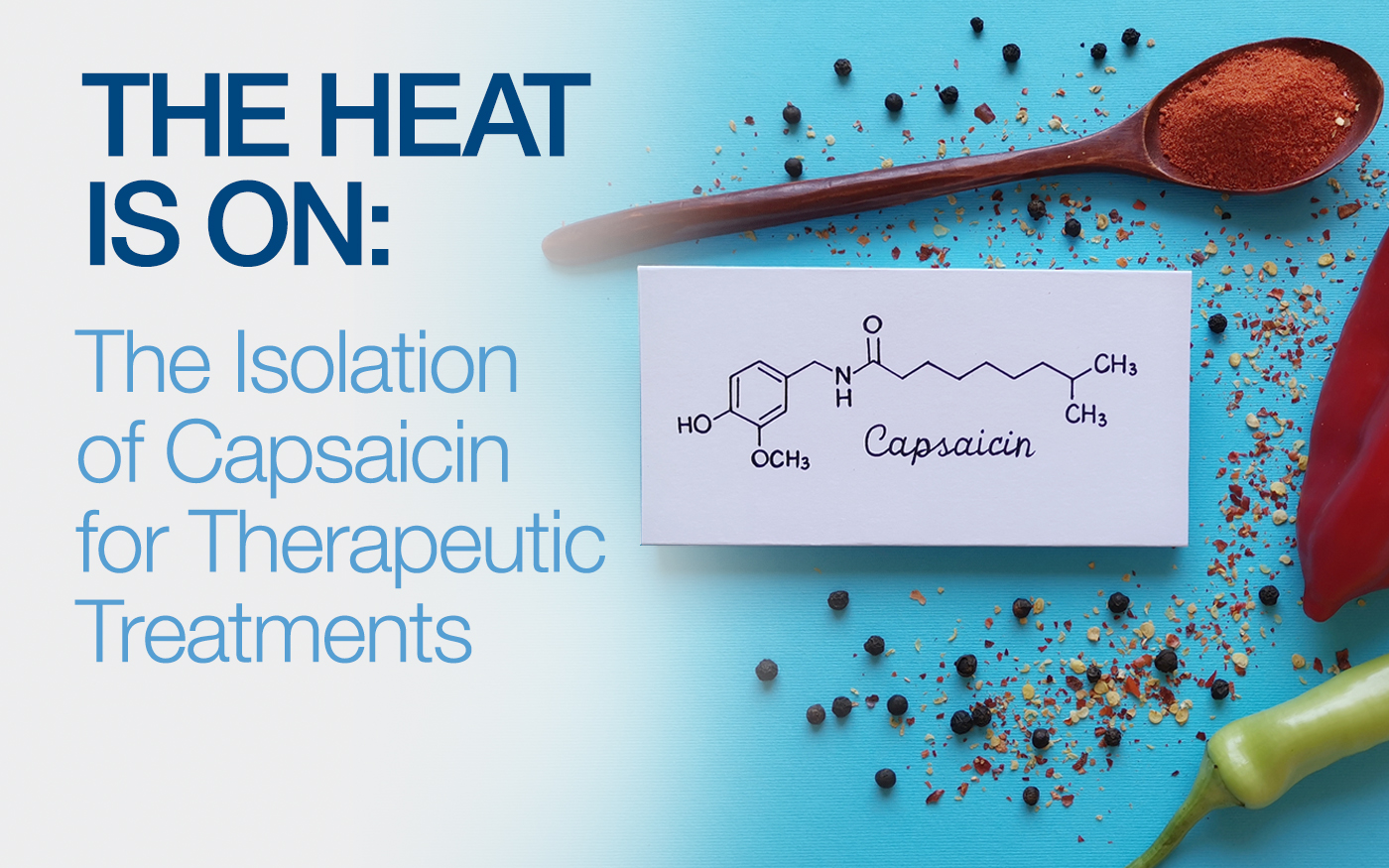The burning associated with ingesting or touching a chili pepper has been well documented as originating from the organic molecule, capsaicin. Capsaicin is widely accepted as the pepper’s natural defense system, but has also been exploited by the medical community.1Capsaicin research has indicated that it and its analogs contribute to reduced cholesterol, blood lipids, blood sugar, and has anti, -oxidative, -inflammatory, -obesity, and analgesic properties.2
View the Latest Application Notes
The Heat is On: The Isolation of Capsaicin for Therapeutic Treatments
[fa icon="calendar'] February 11, 2022 / by Adam L. Moore, PhD
[fa icon="comment'] Comments: 0
[fa icon="list'] Categories: Food and Beverage
Poisoned by Plastic: The Analysis of BPA and its Derivatives in Water Bottles
[fa icon="calendar'] June 3, 2021 / by Adam L. Moore, PhD
[fa icon="comment'] Comments: 0
[fa icon="list'] Categories: Food and Beverage
Identification of polymeric hardening agents has led to unforeseen effects on humanity. Plastic containers have minimal initial costs and can conform to any shape desired compared with other types of modalities. To help ensure the container can hold its shape as well as aid in corrosion protection from acid components, amphiphilic compounds are added. However, since chemicals are added to the polymer to tune the hardness, pliability, longevity, and any other plasticity metric, there is a possibility of leaching under the right conditions. These conditions include increased solvent temperature, lipophilic and amphiphilic samples, and extended exposure to ultraviolet radiation.
Fast HPLC Analysis of Dyes in Foods and Beverages (PRP-C18)
[fa icon="calendar'] November 25, 2020 / by Adam L. Moore, PhD
[fa icon="comment'] Comments: 0
[fa icon="list'] Categories: Food and Beverage
Dyes have been used over the centuries to give food more of an appeal to those eating it. Old foods were sometimes dyed to provide a more palatable appearance. Today food and beverages are generally dyed for the same reasons, to make the product more appealing, satisfying, and occasionally to hide off-flavors arising from the manufacturing process.
Bio Fermented Alcohol Detection Using Isocratic Cation Exchange HPLC (HC-75 H+)
[fa icon="calendar'] November 25, 2020 / by Adam L. Moore, PhD
[fa icon="comment'] Comments: 0
[fa icon="list'] Categories: Food and Beverage
Concern over detrimental greenhouse gases produced from the combustion of fossil fuels has been growing for the past few decades. Identification of new and more diverse methods of energy use has been investigated around the world. One such avenue is combustible alcohols produced from biomasses like sugar beet or sugar cane. To reduce dependence on fossil fuels, a concerted effort has been made to develop processes where biomass can be fermented biologically by bacteria or yeast to produce combustible alcohols. Combustible alcohols are desired over other technologies due to the convenience of switching from petrol based fuels. Ethanol is already added to most gasolines to increase octane efficiency. With anywhere from 5–25% ethanol being added to petrol products in most of the world and up to 100% ethanol fuel in Brazil.1 Additionally, the combustion of these alcohols tend to be more efficient and lead to less carbon monoxide side products.2



/HAM1614_Social-Posts-for-App-Notes_R1-FNL-HAM1608.jpg)
/HAM1614_Social-Posts-for-App-Notes_R1-FNL-HAM1589.jpg)
Comments: